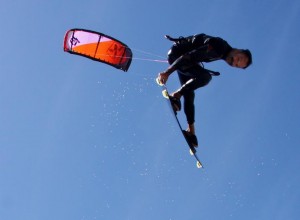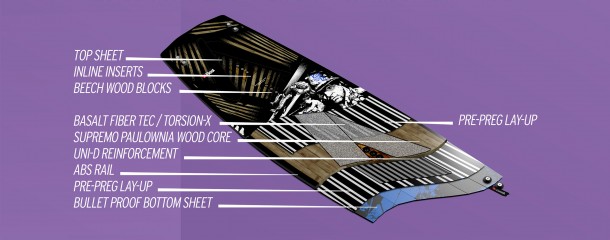For 2014 we’re starting a new series of blog posts featuring kite designers and board shapers behind some of the most successful brands. Our aim is to explain some of the key design decisions that shape the way we kite today and developments that are moving the sport of kitesurfing forward.
Each post will try to answer a single question, with in-depth technical answers, tackled by the guys and girls who spend all their time sweating the details. Hopefully these will be relatively unbiased and free from marketing sway but this will just be the start of the discussion and we hope those interested will get involved, posing further questions and points of view.
So we kick off with our first guest post by BEST kiteboarding head board shaper Franz Schitzhofer
Q: Foam boards were popular several years ago, why have most companies now switched to a full wood core?
Kitesurfing is still a relatively new sport and many shapers involved in the development of products came from a Windsurfing background (including me). The knowledge we had built from developing windsurf equipment was highly useful when starting to design the first kiteboards.
The main material used for windsurf cores is foam, not wood, and the reason for this is due to the light weight characteristics.
To give you an idea of weight comparison between wood and foam:
| Foam | Used in early kiteboards | 80 – 120kg per cubic meter | |
| EPS-Foam | Used in modern windsurf boards | 15 – 20kg per cubic meter | |
| Wood | Used in modern twintips (Pauwlonia) | 320 – 350kg per cubic meter |
So there is a huge advantage using foam, instead of wood, to save weight – over 60% lighter. However foam has a big disadvantage – it is not as pressure-resistant as wood. That’s not such a big deal on a windsurf board, as windsurf boards are much thicker than kiteboards. However on a twin tip this lack of pressure resistance can lead to disaster!
 Twintip riders jump hard and do a lot of tricks! For example take PKRA-riders or Ruben Len10, the tricks are getting harder every year and for the past 2 years or so most pros are on boots, adding extra strain to the board. They’re hurting their bodies and their kite equipment.
Twintip riders jump hard and do a lot of tricks! For example take PKRA-riders or Ruben Len10, the tricks are getting harder every year and for the past 2 years or so most pros are on boots, adding extra strain to the board. They’re hurting their bodies and their kite equipment.
Due to this radical riding, there is a strong load beneath footpads or boots. This has a consequence, on a foam-board, that after some sessions small pockets and blisters occur. These details can weaken the structure of the board’s materials and in the end it’s always the same result – a broken board.
There are ways to avoid these effects with thicker lamination or more sophisticated materials – carbon, kevlar, thick glass fiber – but then the main benefit of foam, less weight, is gone.

Sandwich constructions, similar to windsurf boards, are a good idea in theory but in the reality of industrial production we have to count every buck and for twintips a sandwich construction is just too expensive.
 So that’s the reason why most kiteboard brands use a wood core in their twintips! We at BEST Kiteboarding use Pauwlonia, Beech and combinations of both materials as a wood core in our twintips. This wood grows in plantations and we force our manufacturers to only use wood that is sustainably managed to save this planet.
So that’s the reason why most kiteboard brands use a wood core in their twintips! We at BEST Kiteboarding use Pauwlonia, Beech and combinations of both materials as a wood core in our twintips. This wood grows in plantations and we force our manufacturers to only use wood that is sustainably managed to save this planet.
Conclusion – wood is a perfect compromise between weight, strength, pressure resistance and sustainable materials.
Thanks Franz & BEST Kiteboarding for clearing that up for us and there is no doubt that twintip construction has come a long way over the past 10 years with boards being close to indestructible. Anyone remember back to foam cores with fond memories?